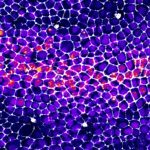Link to Pubmed [PMID] – 38199024
Link to DOI – 10.1016/j.ceb.2023.102316
Curr Opin Cell Biol 2024 Jan; 86(): 102316
Epithelial tissues are dramatically remodelled during embryogenesis and tissue homeostasis and yet need to maintain their sealing properties to sustain their barrier functions at any time. Part of these remodellings involve the elimination of a large proportion of cells through apoptosis. Cell extrusion, the remodelling steps leading to seamless dying cell expulsion, helps to maintain tissue cohesion. However, there is an intrinsic limit in the system that can only accommodate a certain proportion/rate of cell elimination as well as certain spatiotemporal distributions. What are then the critical conditions leading to epithelial rupture/tear/sealing defects upon cell elimination and which mechanisms ensure that such limits are never reached? In this short review, I document the conditions in which epithelial rupture has been observed, including in the contexts of epithelial cell death, and the mechanical parameters influencing tissue rupture, and review feedback mechanisms which help to keep the epithelia away from the breaking point.


